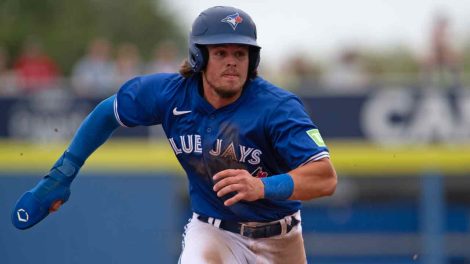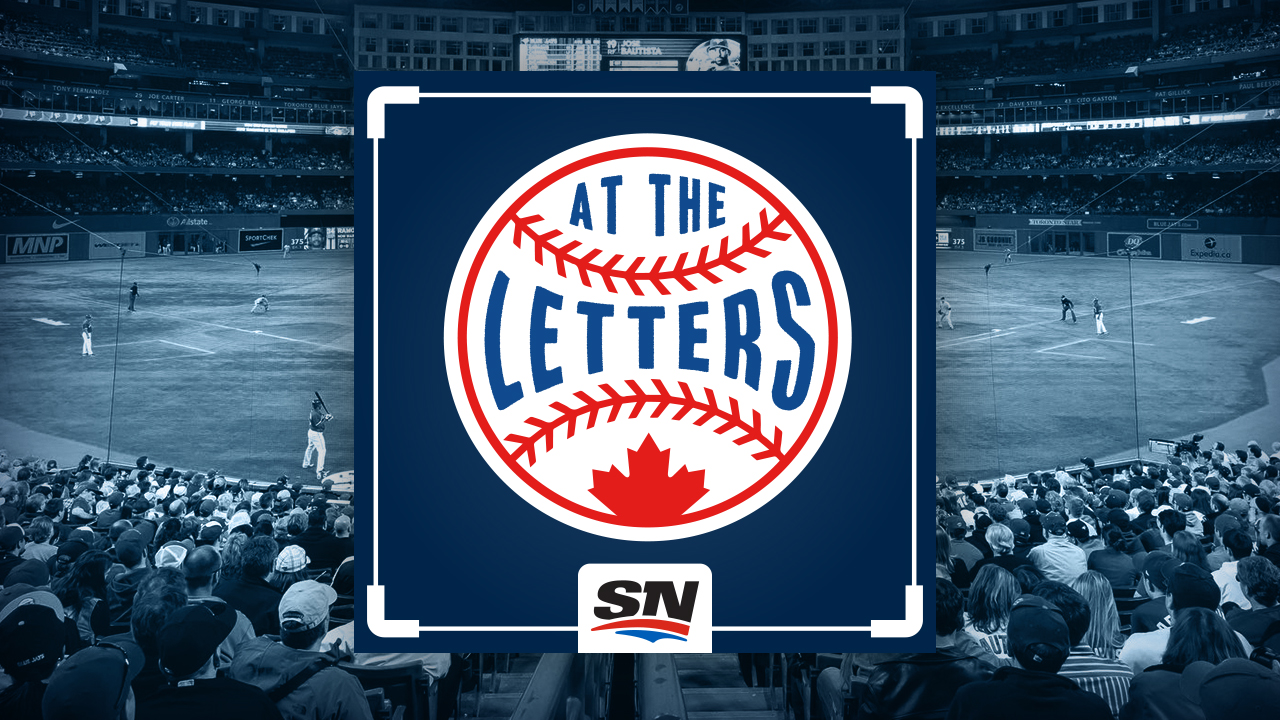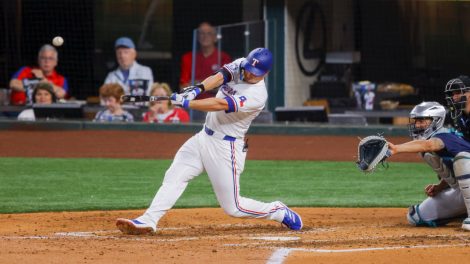LAS VEGAS – You’ll have to excuse me if I don’t join the chorus of outrage at the selection of designated hitter and compiler Harold Baines to the Hall of Fame by the Hall’s ‘Today’s Game’ Committee.
I mean, the talk-show guy in me would love to pick away at the low-hanging fruit that is Baines’ career: how the fact that Jay Jaffe’s JAWS ratings, which ranks a player’s career WAR relative to enshrined members at that position, places him at about half the standard as a right-fielder – his predominant position other than designated hitter – or that his career WAR is better than just 13 other members of the Hall, none of whom would have a prayer of getting in on today’s writers ballot. As Tom Verducci of Sports Illustrated pointed out, Baines was the personification of the designated hitter for 28 years. Man, was he ever. He won just one Silver Slugger and had all of two seasons with a 3.0 WAR. Geezus … Corey Koskie had three of those. In fact, almost 800 players not in the Hall had more years of 3.0 WAR than Baines.
Lee Smith was also selected and at Monday’s news conference, the inductees’ reactions could not have been different. Smith, who fell off the Baseball Writers Association of America ballot in 2012 but still reached 50 per cent in balloting, positively beamed. Baines’ response to his reaction to the telephone call on Sunday telling him he was in?
“I wasn’t sitting around and thinking about it,” he said. “I didn’t play the game for the Hall of Fame.”
[snippet id=4269767]
There has been no Hall of Fame selection – by whatever committee or voting pool at any time – greeted with as much shock as Baines’. Ever. Baines was a lovely man and great teammate, but some of the serious national voices in the game have used words such as “embarrassment” to describe his selection.
I’d love to point out that this is one time you can’t blame the writers. We had nothing to do with this. Nada. Baines lasted five years on the writers ballot and crapped out at 6 per cent. Now, both men will go into Cooperstown as a result of their election by the Today’s Game Committee, one of four committees struck by the Hall to deal with candidates who have dropped off the BBWAA ballot or are executives, managers or umpires.
Today’s Game is a committee that deals with candidates who put their stamp on the game from 1988 to present day, and is composed of Hall of Famers Roberto Alomar, Bert Blyleven, Pat Gillick, Tony La Russa, Joe Morgan, John Schuerholz, Ozzie Smith, Greg Maddux and Joe Torre; executives Paul Beeston, Al Avila, Jerry Reinsdorf and Andy MacPhail; and veteran media members Steve Hirdt, Tim Kurkjian and Claire Smith. The committee meets twice every five years as does the Modern Baseball Committee (1970-87). The Golden Days Committee (1950-69) meets every five years while the Early Baseball Committee (before 1950) meets once each decade.
Joe Carter’s name was on the ballot. He is listed as receiving “less than five” votes.
Baines, who had 384 home runs and 2,866 hits over 22 years, acknowledged that having his former owner (Reinsdorf) and manager (La Russa) pressing his case “probably helped me, to be honest.”
No kidding.
“You know how great players in great moments slow the game down,” said La Russa, sending in the dissatisfaction with Baines’ inclusion. “I had him in Chicago and Oakland. Harold always had the ability to drive in the big run. He was a clutch hitter and if it wasn’t for the strikes (labour stoppages) he’d have 3,000 hits. To me, it’s a little bit like Alan Trammell. You ask the guys in uniform; the people upstairs, the general managers … Alan Trammell should have been a first-ballot Hall of Famer. But the thing is, he never made a lot of noise. Same thing with Harold. He probably dodged the attention. But if you look at his record, it can’t be denied. The 3,000 hits are right there. In the 80s and 90s, in just about every offensive category, he’s in the top four or five guys.”
I have no real issue with Smith, who received 16 of 16 votes and had 478 career saves over 18 years and was the career leader for the longest time until he was surpassed by Trevor Hoffman (who went into the Hall last year) and Mariano Rivera, the all-time leader who will go in this year as a close to unanimous selection.
There’s a nice symmetry there, in fact, because voting members of the BBWAA (of which I am one) have wrestled with both the statistical and strategic evolution of the closer role for decades. Dennis Eckersley and John Smoltz were converted starters and their numbers made it easy. But just think back to the fuss created by Goose Gossage when he had to wait while Bruce Sutter went in and, well, you can make the case that once Pete Rose’s eligibility was settled and until steroids came along this was one of the most pressing of the games internal political issue when it came to Hall voting.
But Baines? My god … I’ve covered baseball since 1989 and I didn’t realize I was watching so many Hall of Famers. Baines’ induction moves the Hall closer to the likes of the hockey or NFL Halls of Fame, where the debate much of the time isn’t about why somebody isn’t in as it is why somebody is in.
Still … truth is, we as BBWAA voters have struggled with the concept of the DH, even more so than we’ve struggled with the concept of the closer. And if this really is a crime against baseball, there’s an easy enough fix: when it comes to players, a certain threshold on the BBWAA ballot should be necessary to qualify for committee consideration. Make it 15, 20, 25 … whatever. At one time, it was.
Look: this game is evolving around the edges at a frightening pace. Like every other professional league, the Majors is getting younger and younger. Only a Pollyanna would suggest drugs are out of the game, but it is clear that players who are 37 are now playing like they’re 37; that it’s tougher than it’s been to cheat the aging curve. Look at this year’s free-agent class: Bryce Harper and Manny Machado are both 26. They’re generational free agents at a young age. The numbers show that the game is healthier than ever before in terms of revenue, but less and less of it is going to the players who are younger and younger to the point that the Major League Baseball Players Association needs to have a serious look at what it expects from the system of compensation. Shifts might be outlawed … the ‘opener’ is a pitching concept that might be here to stay.
I still believe broadening the base of decision-making is the best way around issues of political importance to the game. I believe that, by and large, the Hall has been well-served by expanding the roles of committees. You can’t eliminate agendas from these committees any more than you can eliminate agendas within the BBWAA voting block. But you know what? Time has a way of letting all these issues – steroids, evolution of roles and tactics – breathe.
Sometimes it takes more than a player’s time on the writers ballot. These committees are a useful safety valve and who knows? Maybe the Hall selection process will need a drastic overhaul. Goodness knows that print media, which supplies a great deal of the voting body, is disappearing. In the meantime, has Harold Baines’ selection cheapened the Hall? Not as much as the sorry exclusion of Marvin Miller, who made millionaires of a lot of these players. You want to get exercise about something? Look there.
[snippet id=4071101]
NOTES
MONTOYO AND THE GUERRERO’S
On the day the Toronto Blue Jays signed Vladimir Guerrero Jr., Charlie Montoyo was in town as a member of the Tampa Bay Rays coaching staff. Montoyo spent time with Vlady Sr. when the Hall of Famer was a Montreal Expos minor leaguer, and he said at the time he hoped the Blue Jays made sure that the younger Guerrero was comfortable speaking English.
His father understood English perfectly well. But Vlady Sr. used an interpreter, much as Fernando Valenzuela did, as a means of buying time for answers and making reporters less interested in talking with him. It worked … but given the frenzy around Vlady Jr.’s career — he was presented with Baseball America’s minor league player of the year award here Sunday night — you wonder whether the Blue Jays will be proactive in ensuring their prized prospect is comfortable in both Spanish and English.
“Vladdy is a fun guy … great sense of humour,” Montoyo said of Vlady Sr., that day in Toronto. “I wouldn’t say he got lazy about speaking English … I just think people made it easy for him to be comfortable without it.”
Something to keep in mind given one of the reasons Montoyo was hired was to help develop the most highly-touted prospect this organization has seen.
CONTRACTS TO SHED
The Blue Jays have what amounts to $58 million worth of salary they’d love to shed: $38 million (guaranteed) to Troy Tulowitzki (operating under the assumption that 2021 option for $15 million gets bought out) and $20 million in Russ Martin. They’re on the hook for $12 million with Kendrys Morales, but seem to have some use for him. I’d have to think the market for Martin is limited, at least until halfway through the regular season.
The Blue Jays, I’m told, had discussions last winter with Atlanta Braves general manager Alex Anthopoulos when the former Blue Jays GM was trying to off-load Matt Kemp’s contract. Anthopoulos ended up moving Kemp and his two-year, $43.5-million contract ($6 million per year of which was already being paid by the Los Angeles Dodgers and San Diego Padres as a result of previous trades of Kemp) back to the Dodgers for $50 million worth of Dodgers trash: Charlie Culberson, Adrian Gonzalez, Brandon McCarthy and Scott Kazmir. It was a contractual version of the kid’s card game Old Maid. Kemp had a productive first half for the Dodgers and tailed off miserably. But it was a reminder that no contract is totally untradable, just as Vernon Wells’ untradable deal wasn’t when Anthopoulos foisted him on the Los Angeles Angels.
Martin’s willingness to play third base and shortstop last season opened some eyes, with one National League West scout saying he could see Martin being a nice piece for a contender – but at the trade deadline. Keep an eye on the New York Mets, who are said to have some interest.
[snippet id=3305549]
ORIOLES HOLDING UP MANAGERS’ AVAILABILITY
When he was manager of the New York Yankees, Joe Torre would usually skip the winter meetings because he was Joe Torre. He could do that. And so every winter meetings there would be a gap in the managers’ availabilities, which are scheduled two at a time and spread out over these three days. There is a gap this year, too, but it’s the Baltimore Orioles creating it, because as of now they don’t have a manager and how far along they are in the process is a bit of a secret. Can’t remember last time that happened. Indeed, new GM Mike Elias is expected to use these meetings to continue through a list that is reported to include Chicago Cubs bench coach Brandon Hyde, Washington Nationals bench coach Chip Hale, Arizona Diamondbacks vice-president of player development Mike Bell and Kansas City Royals quality control coach Pedro Grifol. I’m told former Blue Jays bench coach DeMarlo Hale could fit on this staff.
WHITE SOX IN ON BIG NAME FREE AGENTS
The Philadelphia Phillies have told everybody they’re willing to spend “silly money” in this free-agent market. But the team many people believe will either sign one of Harper or Machado, or at least be a strong finalist, are the Chicago White Sox, a club well-positioned financially and developmentally that must surely think they have a shot in the American League Central given the way the Cleveland Indians appear to be re-calibrating. The biggest issue for the White Sox remains that they will be without Michael Kopech this season due to Tommy John surgery. That could mean they’re ETA is a year away, but if the Indians trade Cory Kluber, as is being widely-rumoured, the White Sox would be silly not to jump into the fray. This is a foundational free-agent class.
Jeff Blair hosts The Jeff Blair Show from 9 a.m. to 12 p.m. ET on Sportsnet 590 The FAN and also co-hosts ‘The Lede,’ a podcast with Stephen Brunt.
[relatedlinks]









